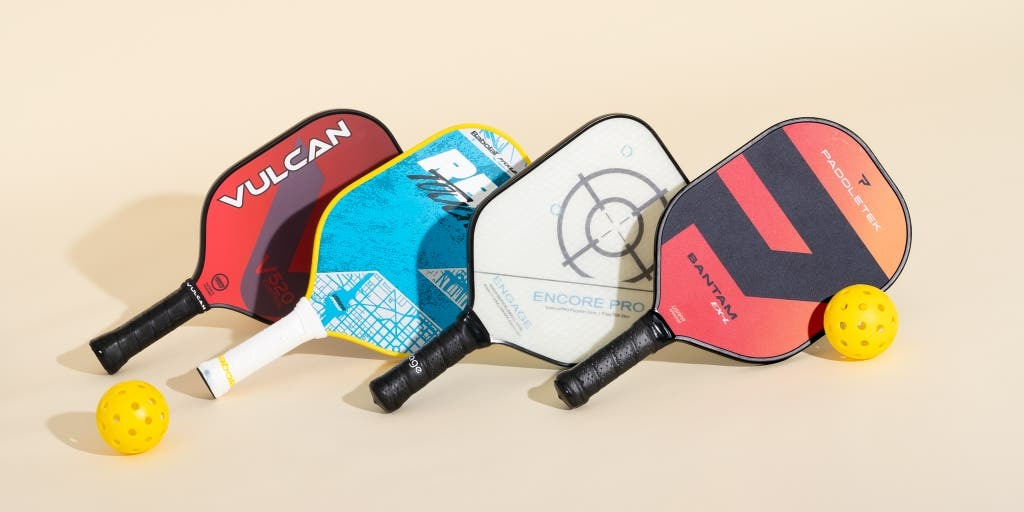Comparing Wood Vs. Composite Pickleball Paddles: Which Is Right For You?
Pickleball, a paddle sport that combines elements of tennis, badminton, and ping-pong, has taken recreational centers and sports clubs by storm. As the popularity of this fast-paced and engaging activity continues to soar, the importance of selecting the right equipment becomes paramount. Among the critical choices a pickleball player must make, the selection between wood and composite paddles stands out as a fundamental decision. In this article, we delve into the intricacies of wood and composite pickleball paddles, providing you with valuable insights to guide your choice and enhance your gameplay experience.

Understanding Pickleball Paddles
Before we dive into the wood versus composite debate, it’s essential to understand the significance of pickleball paddles in the context of the game. These paddles are more than mere tools; they are extensions of the player’s skill and style. Factors such as weight, grip size, shape, and materials play a pivotal role in determining the paddle’s performance characteristics. Wood and composite paddles differ in construction and design, ultimately affecting the player’s gameplay.
Exploring Wood Pickleball Paddles
Historical Context and Tradition
Wood paddles hold a special place in pickleball history, as they were the original choice when the sport was first conceived. Many players appreciate the nostalgic and traditional feel of wood paddles, connecting them to the roots of the game.
Characteristics and Benefits
Wood paddles offer a unique blend of attributes that attract players seeking a natural and authentic experience. The inherent characteristics of wood, such as its tactile feel and touch, resonate with players who value finesse and control over power. These paddles often provide exceptional feedback, allowing players to fine-tune their shots and develop a nuanced playing style. Moreover, wood paddles are renowned for their durability and longevity, making them an ideal choice for recreational and beginner players who are looking for equipment that withstands the test of time.
Unveiling Composite Pickleball Paddles
Emergence and Popularity
The emergence of composite materials in pickleball paddles has revolutionized the game. Composite paddles have gained popularity due to their unique blend of modern technology and performance-enhancing features. While wood paddles hold historical significance, composite paddles cater to the demands of contemporary players seeking a competitive edge.
Advantages of Composite Paddles
Composite paddles are designed to optimize power and control, making them a preferred choice for intermediate to advanced players. These paddles often incorporate advanced materials, such as carbon fiber or fiberglass, which contribute to their lightweight yet robust construction. The innovative design possibilities enabled by composites allow manufacturers to fine-tune aspects like weight distribution, sweet spot size, and aerodynamics. As a result, composite paddles offer an impressive combination of power, precision, and spin potential that can significantly elevate a player’s performance on the court. To access additional information, visit the official store.
Head-to-Head Comparison
To make an informed decision between wood and composite paddles, it’s crucial to assess their performance attributes, durability, and price ranges.
Performance Attributes
- Power and Control: Composite paddles tend to excel in generating power due to their advanced materials and design. On the other hand, wood paddles offer a more controlled and finesse-oriented gameplay experience.
- Spin Potential: The advanced surface technology of composite paddles often allows players to generate greater spin on their shots compared to wood paddles.
- Noise and Vibration: Wood paddles tend to produce a distinctive sound upon impact, which some players find enjoyable. Composite paddles, while generally quieter, might offer less auditory feedback.
Durability and Maintenance
Wood paddles are known for their resilience and ability to withstand rough usage over time. They require minimal maintenance and are less prone to cracking or breakage. In contrast, composite paddles might require more care to prevent potential damage to their specialized materials.
Price Ranges and Budget Considerations
Wood paddles are often more affordable, making them an attractive option for beginners or players on a budget. Composite paddles, due to their advanced materials and technology, usually come at a higher price point.
Choosing the Right Paddle for You
Selecting the optimal paddle depends on a range of factors that align with your playing style, skill level, physical attributes, and personal preferences.
Assessing Skill Level and Playing Style
Beginner players may find wood paddles advantageous due to their forgiving nature and focus on control. Intermediate and advanced players seeking a performance boost might gravitate towards composite paddles to enhance power and spin.
Considering Physical Factors
Factors such as your strength, flexibility, and comfort level play a vital role in determining the suitable paddle. Lighter composite paddles might be preferable for players seeking maneuverability, while wood paddles may offer a more substantial feel.
Personal Preferences
Your preferences regarding aesthetics, paddle weight, and handle grip should not be underestimated. Experimentation with different paddle types can help you discover the combination that aligns with your unique style.
Seeking Advice
Engage with experienced players or seek guidance from coaches to gain insights into the strengths and weaknesses of both wood and composite paddles. Their firsthand experience can provide valuable perspectives to inform your decision.
Real-World Perspectives: Player Interviews
To gain a comprehensive understanding of the wood versus composite debate, let’s hear from players who have distinct preferences.
Wood Paddle Advocates
[Player Name]
“I’ve been playing pickleball for years, and I swear by my trusty wood paddle. It gives me the finesse and control I need to place shots exactly where I want them. Plus, there’s something nostalgic about playing with a paddle that harkens back to the sport’s origins.”
Composite Paddle Enthusiasts
[Player Name]
“My game transformed when I switched to a composite paddle. The power and spin I can generate are game-changers. It took a bit of adjustment, but the rewards in terms of performance were well worth it. I feel like my shots have an extra ‘oomph’ that keeps my opponents guessing.”
The Future of Pickleball Paddle Technology
As technology continues to advance, so too will the realm of pickleball equipment. Innovations in paddle materials, construction techniques, and design are on the horizon. Players can look forward to even more tailored experiences that cater to diverse playing styles and preferences.
Conclusion
In the ongoing wood versus composite pickleball paddle debate, there is no definitive answer. Both types of paddles offer unique advantages, and the right choice ultimately hinges on your playing style, skill level, and personal preferences. Whether you value the traditional touch of wood or the cutting-edge performance of composite, the key is to select the paddle that complements your strengths and enhances your enjoyment of the game. So, before you step onto the pickleball court, take the time to explore both wood and composite options. Your ideal paddle might just be the one that perfectly aligns with your pickleball journey.

















